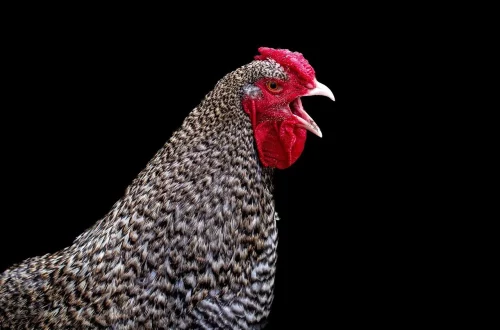
Understanding CT Scan Paws: A Guide for Pet Owners
CT scans, or computed tomography scans, are increasingly becoming a vital tool in veterinary medicine. These advanced imaging techniques allow veterinarians to obtain detailed cross-sectional images of a pet’s internal structures, providing invaluable insights into their health. Unlike traditional X-rays, CT scans can reveal conditions that may not be visible with other imaging methods. For pet owners, understanding the purpose and process of a CT scan can alleviate anxiety associated with their beloved animals undergoing such procedures.
As pet health becomes a primary concern for many owners, the demand for sophisticated diagnostic tools grows. The advent of CT scanning technology has transformed the way veterinarians diagnose and treat various conditions. From detecting tumors to assessing injuries, a CT scan can greatly enhance the accuracy of a diagnosis. However, this technology is not without its complexities. Many pet owners find themselves bewildered by the technical jargon and the implications of the findings. By demystifying this procedure, pet owners can feel more empowered when discussing their pet’s health with their veterinarians.
In this guide, we will explore the nuances of CT scans in veterinary medicine, helping pet owners understand their significance, the process involved, and what to expect afterward. Through this knowledge, we aim to foster a sense of confidence and clarity in navigating the often overwhelming world of pet health care.
What is a CT Scan and How Does It Work?
A CT scan, or computed tomography scan, utilizes a series of X-ray images taken from different angles, which a computer then processes to create cross-sectional images of the body. This technology is particularly beneficial in veterinary medicine, as it allows for a non-invasive examination of a pet’s internal structures, including organs, bones, and soft tissues.
The process begins with the pet being positioned on a table that slides into the CT scanner. The machine resembles a large donut and contains a rotating X-ray tube that captures images from multiple angles. These images are then compiled by a computer to create detailed cross-sectional views, which can be analyzed by veterinarians. The entire process typically takes only a few minutes, during which the pet may need to remain still to ensure clarity in the images.
One of the key advantages of CT scans is their ability to detect abnormalities that might not be visible through standard X-rays. For instance, small tumors, internal bleeding, or complex fractures can often be identified more accurately with a CT scan. This level of detail helps veterinarians make informed decisions about diagnosis and treatment plans, ultimately leading to better outcomes for pets.
In some cases, pets may require sedation during the procedure to keep them calm and still. While this may raise concerns among pet owners, it is a standard practice to ensure the safety and comfort of the animal. The sedation is carefully monitored, and veterinarians will discuss any potential risks beforehand.
Overall, understanding how CT scans work can help pet owners appreciate their importance in modern veterinary diagnostics. With these advanced imaging techniques, veterinarians can provide more accurate diagnoses and tailored treatment plans for their furry patients.
Benefits of CT Scans in Veterinary Medicine
CT scans offer numerous benefits in veterinary medicine, making them an essential tool for diagnosing and treating a wide range of conditions. One of the primary advantages is the enhanced image quality compared to traditional X-rays. CT scans yield high-resolution images that provide a more comprehensive view of a pet’s internal anatomy, which can lead to earlier detection of health issues.
For instance, tumors that are too small to be detected by standard imaging can often be identified through a CT scan. This early detection can significantly improve treatment outcomes, allowing for timely intervention. Additionally, CT scans are particularly effective in evaluating complex areas of the body, such as the brain, chest, and abdomen.
Furthermore, CT scans are invaluable in assessing trauma cases. For pets that have been in accidents, quick and accurate diagnosis is crucial. A CT scan can help veterinarians determine the extent of internal injuries, aiding in emergency treatment decisions. The rapid acquisition of images allows for immediate assessment, which can be lifesaving in critical situations.
Another benefit of CT scans is their ability to provide three-dimensional images. This capability allows veterinarians to visualize the exact location and size of abnormalities, facilitating surgical planning when necessary. For example, if a pet requires surgery to remove a tumor, a CT scan can guide the surgeon in determining the best approach and minimizing damage to surrounding tissues.
Moreover, CT scans can assist in monitoring the progress of certain conditions. For pets undergoing treatment for cancer, for instance, follow-up scans can help evaluate the effectiveness of therapy and make adjustments as needed.
In summary, the benefits of CT scanning in veterinary medicine are substantial. From early detection and accurate diagnosis to enhanced surgical planning and monitoring, these advanced imaging techniques play a critical role in ensuring the health and well-being of pets.
Preparing Your Pet for a CT Scan
Preparation is key to ensuring a smooth and successful CT scan for your pet. As a pet owner, understanding the necessary steps can help ease your mind and ensure your furry friend is ready for the procedure.
First and foremost, it is essential to follow your veterinarian’s instructions regarding food and water intake before the scan. In many cases, pets are required to fast for a certain period prior to the procedure. This is typically done to minimize the risk of complications during sedation and to ensure clear imaging results. Your veterinarian will provide specific guidelines based on your pet’s individual needs.
Additionally, if your pet is on any medications, it is vital to inform your veterinarian beforehand. Some medications may need to be adjusted or temporarily withheld prior to the scan, depending on the circumstances.
On the day of the CT scan, arrive at the veterinary clinic with plenty of time to spare. This allows for any last-minute questions and helps to alleviate any anxiety you or your pet may feel. Familiarizing your pet with the clinic environment can also be beneficial. Bring along their favorite toy or blanket to provide comfort during the visit.
Once you arrive, the veterinary staff will typically conduct a pre-anesthetic exam to ensure your pet is fit for sedation. This may involve checking their vitals and overall health status. It is a good opportunity to discuss any concerns or questions you may have about the procedure.
After the scan, your pet will be monitored as they recover from sedation. You will receive post-procedure instructions, which may include guidance on activity restrictions and when to resume normal feeding.
In conclusion, proper preparation is crucial for a successful CT scan experience for your pet. By following your veterinarian’s guidance and ensuring your pet is comfortable, you can help facilitate a smooth procedure that contributes to their health and well-being.
Understanding the Results of a CT Scan
Once your pet has undergone a CT scan, the next step involves understanding the results and what they mean for your pet’s health. After the images are captured, a veterinary radiologist or your veterinarian will analyze the scans to identify any abnormalities or concerns.
The interpretation of CT scans requires specialized training, as the images can be complex and nuanced. Your veterinarian will review the findings and discuss them with you, highlighting any areas of concern. This may include the presence of tumors, fractures, or other significant issues.
It’s important to remember that not all findings from a CT scan indicate a serious problem. Some pets may have incidental findings—conditions that are present but not causing any health issues. Your veterinarian will explain the significance of these findings and whether further action is necessary.
In some cases, additional tests may be recommended based on the CT scan results. For instance, if a tumor is detected, your veterinarian may suggest a biopsy to determine if it is benign or malignant. Alternatively, if a fracture is identified, a treatment plan will be developed to address it appropriately.
Communication with your veterinarian is crucial during this process. Don’t hesitate to ask questions or express any concerns you may have regarding the findings or recommended next steps. Understanding the results fully can help you make informed decisions about your pet’s care.
In summary, interpreting CT scan results is a collaborative process between you and your veterinarian. By engaging in open communication and seeking clarification on any uncertainties, you can play an active role in your pet’s health care and ensure they receive the best possible treatment.
**Disclaimer:** This article is for informational purposes only and does not constitute medical advice. For any health-related concerns regarding your pet, please consult your veterinarian.




